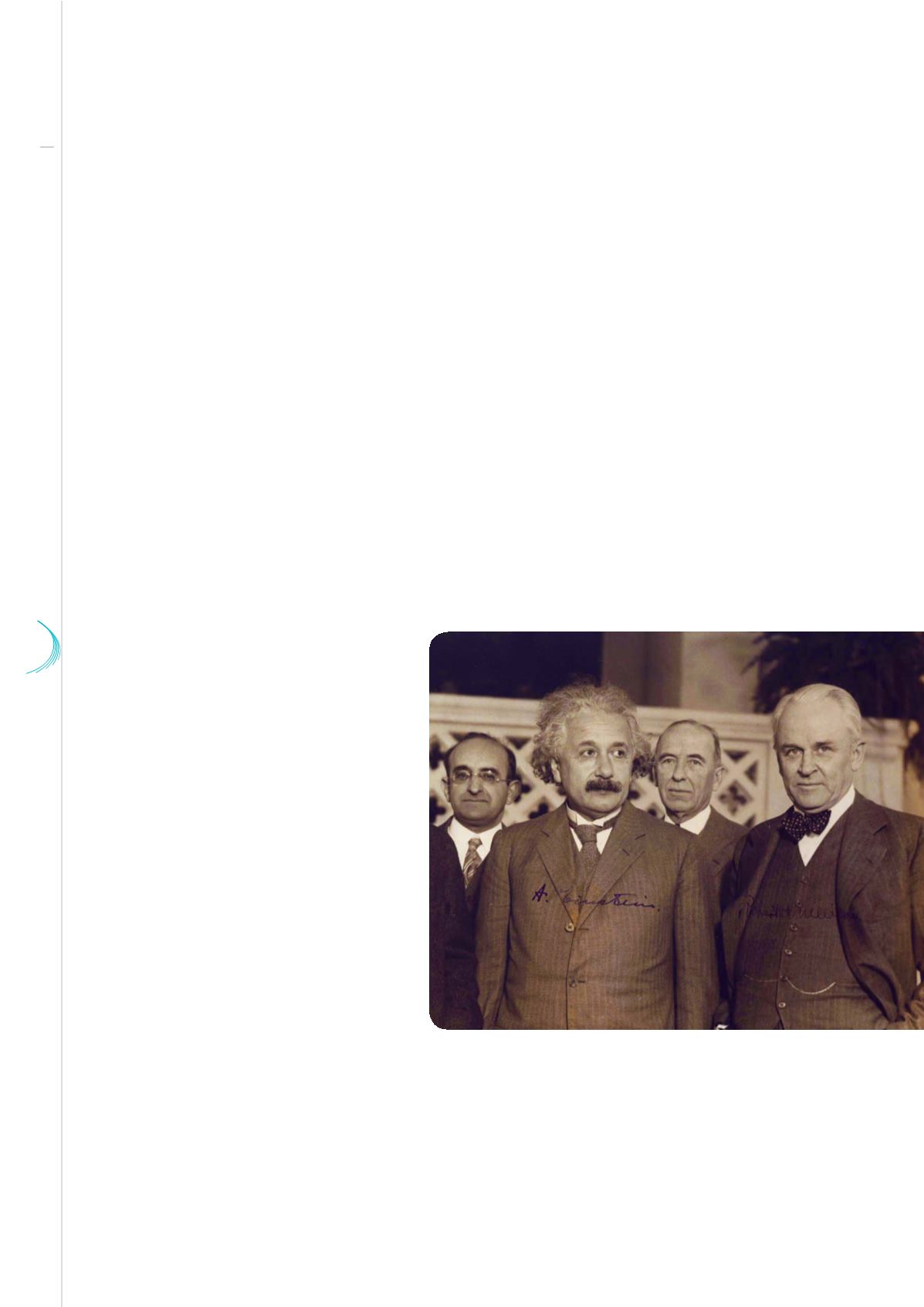

37 38
70
La Lettre
With Albert Einstein (1879-1955), 1905 marks the revival of the corpuscular
theory of light, allowing him to make predictions on the photo-electric effect
confirmed by experiments of Robert Millikan (1868-1953) in 1915.
© Bygone Collection - Alamy
The case thus seems settled: light is now known to be an electromagnetic wave, in other words, electric
and magnetic fields vibrating in harmony, perpendicularly to the direction of propagation. That is to say
they are transversal waves, as Fresnel’s waves, and we can describe these waves with a comprehensive
theory to which no phenomenon seems to be able to escape. Is it the end of theoretical research in
physics, and is there nothing for physicists but to refine their measurements, as the American optics
scientist Michelson reportedly put it? Surely not. In 1900, the great Kelvin caught sight of two “clouds
above the dynamical theory of heat and light” (Lord Kelvin.
Nineteenth century clouds over the dynamical
theory of heat and light. Philosophical Magazine Series
6 1901 ; 2 : 1-40). Such two clouds, which Kelvin
described as “very dense”, would lead Einstein to lay the foundations of the two revolutions of the 20
th
Century physics: relativity, obviously, but also quantum physics, in the emergence of which he would play
a key role.
The wave-particle duality
Einstein’s first article on quantum physics was published in 1905. It propounds a drastic hypothesis: light
is formed of grains, the LichtQuanten, with a very specific energy and momentum, depending on the
constant introduced by Planck in 1900. Today, these quanta of light are called photons. Drawing on this
model, Einstein interpreted the photoelectric effect – in other words the ejection of electrons from matter
under the effect of light – as a photon-
electron collision and thus deduced what
was the energy of the ejected electrons.
Among the works Einstein published at
that time, this article is certainly the least
appreciated of all, as can be seen from
a negative comment in the report which
would however lead to his election at
the Prussian Academy of sciences in
1911. Yet it was this article that caught
the attention of the Nobel Committee,
awarding him the Prize in 1922 after
Millikan'
experiments
confirmed
Einstein's predictions on the photoelectric
effect – a confirmation “
contrary to all
my expectations
”, said Millikan in his
memoirs (R.A. Millikan.
Albert Einstein on
His Seventieth Birthday. Rev Mod Phys
1949 ; 21 : 343).
The corpuscular model was back on track. But then, how could one account for interferences, diffraction
or double refraction, as Young and Fresnel showed they could only be consistently explained through
the wave model? How could one make this corpuscular model compatible with Maxwell’s description


















